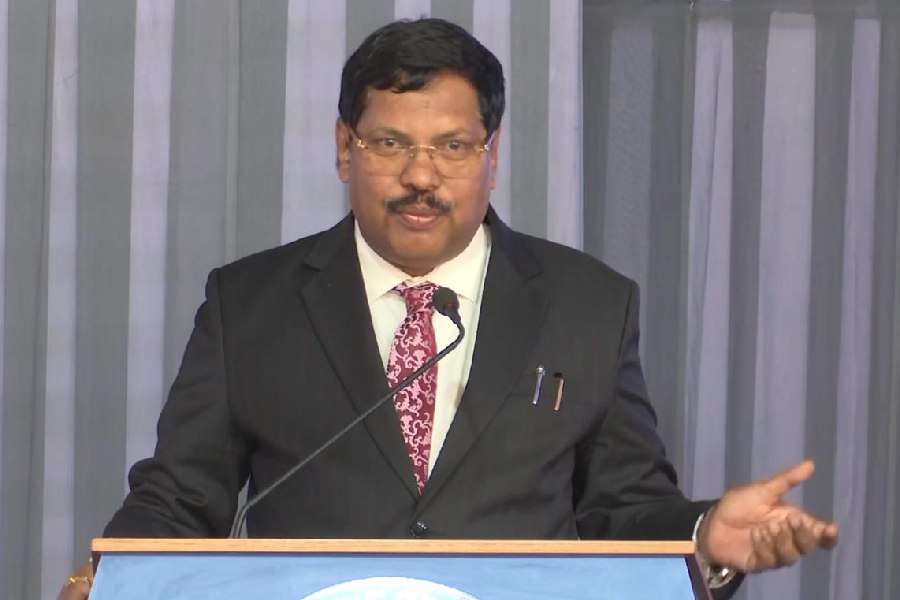 |
| File picture of a Bengal florican |
Nov. 12: When it comes to avian diversity, few wildlife sanctuaries can rival Manas National Park. Now, a book pays tribute to not just the avian wealth of Manas but also to two British gentlemen who shaped the future of the national park and a florican, which died in captivity last year.
Authored by ornithologist Anwaruddin Choudhury, Birds of Manas is the first book to list the national park’s avian wealth. The book was released recently at the Project Tiger headquarters.
The book is dedicated to the memory of J.C. Arbuthnot, an Indian Civil Services officer, and Major Gurdon — two men who initiated the protection of rhinos in Manas National Park more than 100 years ago. Also finding an honourable mention is the florican that died after a few months of battling for survival at Kokilabari in Manas last year.
Choudhury, also the deputy commissioner of Baksa, said although Arbu-thnot and Gurdon were no longer alive, their work for the conservation of Manas could never be forgotten.
Kampa Borgoyari, the deputy chief of the Bodoland Territorial Council, released the book and thanked Choudhury for his efforts to document the rich biodiversity of Manas.
The book lists 476 species of birds, a remarkably high density for a single protected area that is surpassed only by Kaziranga and Corbett National Park. Out of the 476, three are reported to be critically endangered, four endangered, 17 vulnerable, 18 near threatened and five restricted range species.
Some noteworthy birds of Manas National Park are the Bengal florican, greater adjutant stork and the dark-rumped or Khasi Hills swift.
Choudhury said the aim of the book was to provide an up-to-date document, which includes a first-hand account of the avifauna of this magnificent wilderness. The book is presented in simple language and is scientifically authentic. The information is graphically supplemented with photos, drawings, maps and diagrams.
Choudhury said Manas “suffered a lot” since 1989 because of a law and order breakdown, but the situation has shown a marked improvement in recent years. “The best part of the revival is that foreign tourists are visiting the park.”
Chapaguri MLA Than-eswar Basumatary, BTC chief of forests G. Basumatary, Manas field director A. Rabha, Baksa superintendent of police K.J. Saikia, Manas deputy field director R. Bhattacharjee and members of various NGOs, including Maozigendri and Nature’s Foster, attended the book release.









